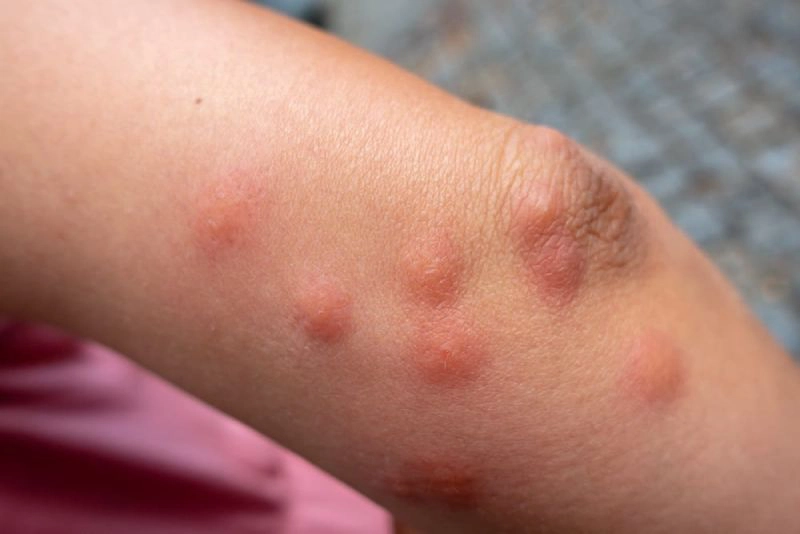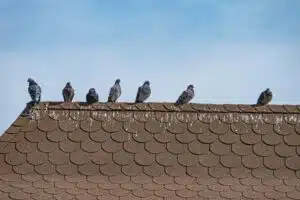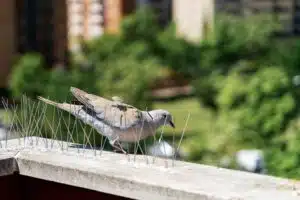For many home or building owners who have dealt with pests at some point in the past, identification is one of the most frustrating elements of this process. Especially when it comes to insects, there are a whole host of different pest types out there, many of which are very small and look somewhat similar – and may even have similar results when they interact with people.
At A-1 Exterminators, pest identification is one major part of our pest control and exterminator services, which include areas ranging from general insect control up to termites, spiders and even larger pests like rodents and birds. Our pest control professionals know all the tricks of the trade that will help us identify exactly which pest or pests are causing problems on your property, and we’ll happily provide tips and expertise in this area for any of our clients.
One particular situation we often receive calls on: Clients have been bitten by one of several different biting insects, and are worried there may be an infestation – but aren’t really sure which pest their bite actually indicates. Here’s a primer on the four most common types of biting insects found on properties, plus how to identify them based on their bite and some additional pieces of important information to know about each of them as we head into the warm season, where insects are more common.
Mosquitoes
Perhaps the single best-known pest in North America is the mosquito, especially during the summer period we’re just getting ready to enter. In fact, there are nearly 200 different species of mosquito just on this continent, though most look similar: Brown, gray or black in color, with scales that are typically silver, white, green or iridescent.
Mosquitoes are most commonly found near water sources, which they require to breed. Ponds, marshes, bird baths, or even puddles of pooling water on your property will all be areas where mosquitoes might congregate, including near moisture inside if any standing water is present. Mosquitoes are vectors of several forms of disease.
Bite format: Mosquitoes are well-known for their propensity to bite humans and attempt to extract blood for feeding. Their bites leave red, itchy bumps on the skin.
A top method for preventing a mosquito infestation is removing standing water on the property, including both outdoor and indoor areas. Not only should landscaping and concrete areas be cleared of any puddles or water, you should also ensure there isn’t any in your basement, crawl spaces or related interior areas.
Ticks
Another blood-sucking biter that’s common in North America is the tick, though there’s a common misconception here: The tick is technically an arachnid, not an insect, though it’s often referred to alongside other insects because its behavior is similar. There are several forms of ticks that will vary in color depending on their precise species, but most ticks are flat, oval and a bit smaller than the size of a sunflower seed.
Ticks tend to prefer vegetative areas to make their homes. As such, they can often be found near woods and trees, or in other highly vegetated spots. They’re known to carry Lyme disease, spotted fever and a few other diseases, as well.
Bite format: Ticks leave a rash that takes the shape of an expanding bullseye, and this rash is often a symptom of Lyme disease. However, perhaps the most common indicator of a tick bite is seeing the tick itself, as ticks will commonly latch onto or burrow into the skin while sucking blood.
If you’re the type who spends lots of time outdoors, you may be at higher risk for ticks than most because of their common nesting places. If you find a tick on yourself, contact a professional for simple removal steps.
Fleas
Another of the most popular blood-sucking insects, and one that doesn’t discriminate between humans and other warm-blooded animals, is the flea. There are several different types of flea, but the most common is known as the cat flea – so named because it feeds on cats, though it’s also perfectly happy to prey on dogs, humans and other beings as well. Generally speaking, fleas will be a dark-red or brown color, and will be anywhere from 1/6 of an inch to 1/12 of an inch in length.
Fleas are an issue in large part due to how easily they attach to hosts and move around. They not only impact dogs and cats, but also travel on their fur, and do the same for wild animals like raccoons and opossums. In fact, they usually spend most of their adult lifespan attached to the same host, though this can vary between species.
Bite format: Fleas bite and leave painful, itchy red bumps on the skin of humans. For pets, they are known to often cause serious allergic dermatitis on the skin.
To prevent fleas, especially in homes with pets, regular cleanliness is required. This is particularly true for pets themselves, who should be bathed and groomed regularly. They should also visit a veterinarian annually, one who can inform you if they’re dealing with fleas or have any evidence of a past flea issue.
Bed Bugs
Finally there’s the bed bug, which is normally found around mattresses, bed frames and other bedroom areas – but can also be found in floorboards and other furniture areas. Like fleas, bed bugs are very good at attaching to items and moving around, only for bed bugs, these items don’t have to be living. They often move around on luggage, purses, suitcases and other personal belongings, and while they do not transmit disease, they create allergy symptoms for some people.
Bite format: Bed bugs will bite humans, mostly on extremities like the legs and arms that are exposed while we sleep. They may leave red, itchy welts, though for some people they’ll leave no marks.
Preventing bed bugs involves cleaning and sanitizing furniture and carrying items like those we mentioned above. Also look for signs of bed bugs, such as small fecal spots and molted bed bug skins.
For more on how to identify biting insects based on their bite, or to learn about any of our insect control or other pest control services, speak to the staff at A-1 Exterminators today.



